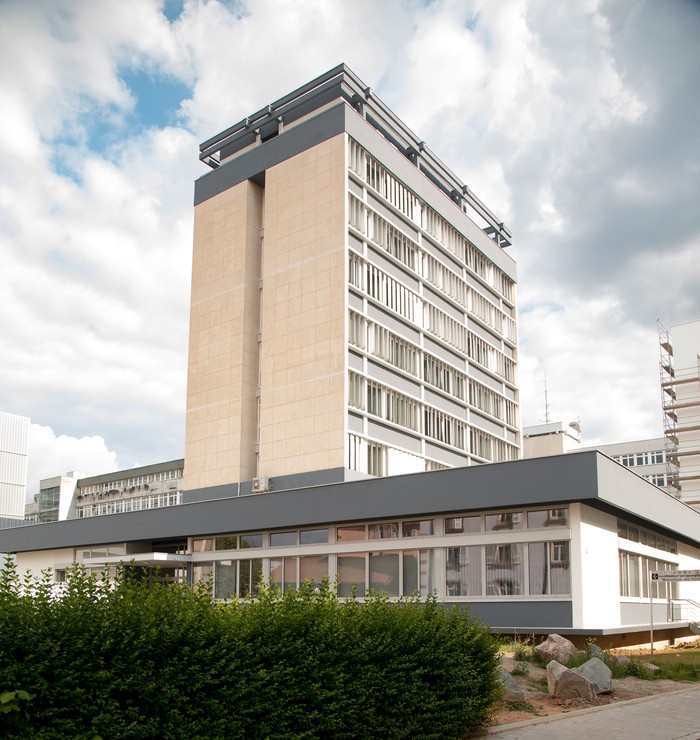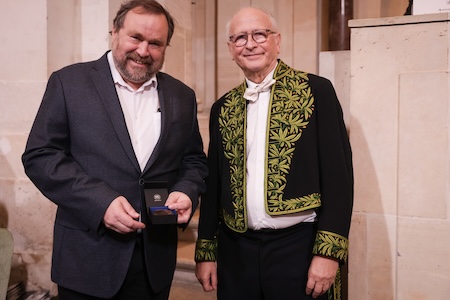Institut de recherche mathématique avancée
L'institut
À la une
Agenda
-
Mardi 6 janvier 2026 - 14h00 Séminaire ART
-
Emily Norton :
À venir
- Lieu : Salle de conférences IRMA
-
Jeudi 8 janvier 2026 - 16h30 Séminaire Doctorants
-
Salim Alloun :
La garde-robe que Riemann n'avait pas vue.
- Lieu : Salle de conférences IRMA
-
Résumé : Bernhard Riemann (1826-1866) dans sa thèse avait construit pour ainsi dire de ses propres mains ce qu'on appelle aujourd'hui les surfaces de Riemann. Elles généralisaient le plan complexe, et en géomètre-analytique Riemann avait réussi à calculer la dimension de l'espace paramétrisant ces surfaces. Plus tard Werner Fenchel (1905-1988) et Jakob Nielsen (1890-1959) proposèrent une autre façon qui elle mit en jeu la géométrie hyperbolique et les découpes en pantalons. Pour vous montrer les surfaces comme vous ne les avez jamais vues, je présenterai les propriétés topologiques de ces découpes que je formulerai dans un deuxième temps en des termes algébriques à l'aide de la bigèbre de Goldman-Turaev.
-
Lundi 12 janvier 2026 - 14h00 Séminaire Géométrie et applications
-
Sergi Burniol-Clotet :
À venir
- Lieu : Salle de séminaires IRMA
-
Résumé : TBA
-
Mardi 13 janvier 2026 - 14h00 Séminaire Equations aux dérivées partielles
-
Corentin Houpert :
Physics-Informed Autoencoders for filling missing values in CO2 measurements
- Lieu : Salle de conférences IRMA
-
Résumé : Missing values in measurements for carbon dioxide emissions on drained peatlands remains an open challenge for training forecasting techniques to achieve net zero. At the field scale, existing methods struggle to model CO_2 emissions to fill gaps, especially in nighttime measurements. We propose robust Physics-Informed Autoencoders (PIAEs), which combine the generative capabilities of Autoencoders with the reliability of physical models of Net Ecosystem Exchange (NEE) that quantify CO_2 exchanges between the atmosphere and major carbon pools. Our method integrates equations describing the physical processes and associated uncertainties to fill gaps in NEE measurements from eddy covariance (EC) flux towers. In the PIAE, various sensor measurements are encoded into the latent space, and a set of decoders is then used to approximate the ecosystem parameters and the optimal NEE forecast, directed by dynamics described by a stochastic differential equation. These decoders utilize nighttime and daytime NEE models that describe carbon transfer as a Wiener process. Finally, we use a two-phased training routine with two loss functions describing each phase: Mean Squared Error (MSE) and Maximum Mean Discrepancy (MMD) between the measurements and the reconstructed samples. PIAE outperforms the current state-of-the-art Random Forest Robust on the prediction of nighttime NEE measurements on various distribution-based and data-fitting metrics. We present significant improvement in capturing temporal trends in the NEE at daily, weekly, monthly and quarterly scales.
-
Mardi 13 janvier 2026 - 14h00 Séminaire ART
-
Clément Dupont :
à preciser
- Lieu : Salle de séminaires IRMA
-
Vendredi 16 janvier 2026 - 11h00 Séminaire Statistique
-
Julien Gibaud :
A venir
- Lieu : Salle de séminaires IRMA
-
Résumé : A venir

